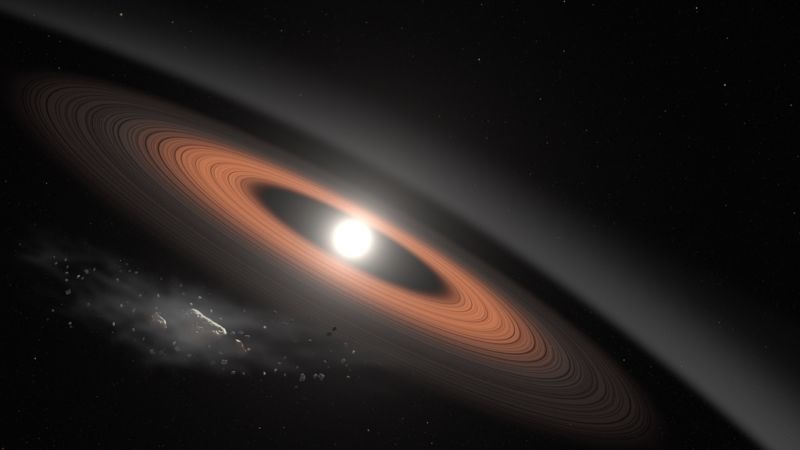White dwarf star covering itself with the atmosphere of a hot Neptune

Enlarge (credit: NASA's Goddard Space Flight Center/Scott Wiessinger)
White dwarfs are the cores of stars that were once similar to the Sun. At some point, these stars have exhausted the lighter elements that fueled their earlier existence, flared up into a bloated red giant, and burned down into carbon and oxygen rich cores not much larger than the Earth (but far more massive). With fusion shut down, they gradually radiate away the remaining temperature, fading out of our ability to detect them.
We now know that a large number of stars have planets around them. So what happens to a planet orbiting a star that puffs up on its way to becoming a white dwarf? Some hints of that have come from a number of these stars that have material similar to that of a rocky planet embedded in their surface. But a new example has been found with gas that has been drawn off from a Neptune-like planet.
One weird dwarfThe white dwarf in question, WD J091405.30+191412.25 (the authors refer to it affectionately as WD J0914+1914), was initially identified as having hydrogen on its surface. This, on its own, is not unusual. While it would have burned much of its hydrogen during its past life, many white dwarfs pull material off nearby stars. But in this case there was no sign of a nearby star. And, even more oddly, there was sulfur on the surface of the white dwarf as well. Sulfur is generally a very rare element on stars, which suggested that the material did not have a stellar origin.
Read 9 remaining paragraphs | Comments